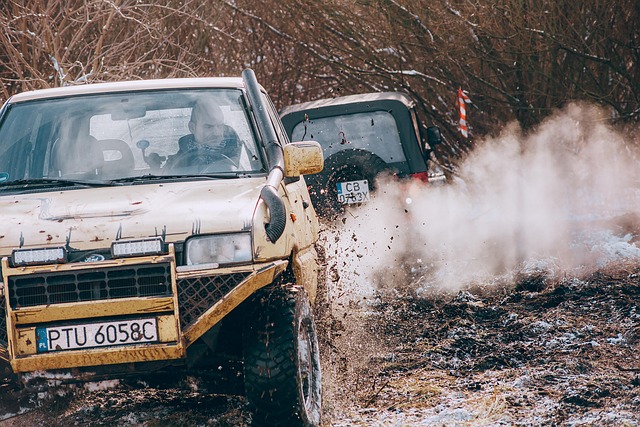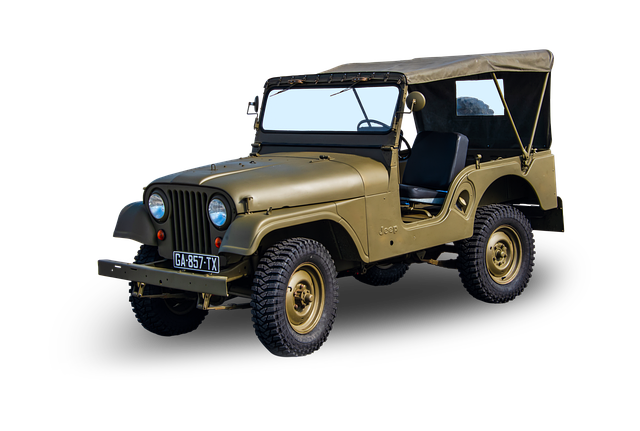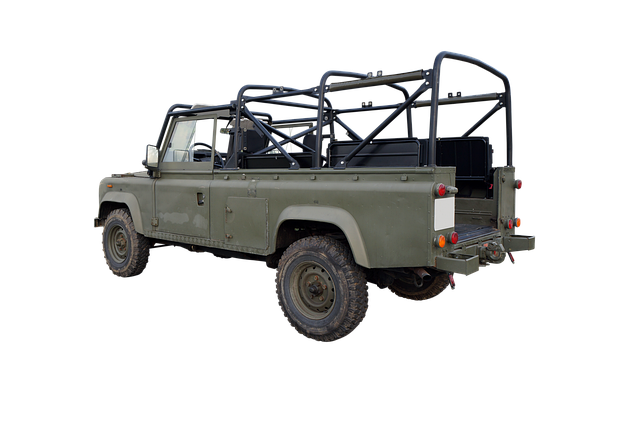Tired of the limitations of your current truck setup? It's time to upgrade with the ultimate off-road solution: the Edinburg Hitch. Designed specifically for the rugged terrain of Brownsville, Texas, this powerful towing hitch enhances your vehicle's capabilities like never before. Tow hea…….
Category: Off Road Towing Hitch Brownsville Texas
Off-Road Towing Hitch Brownsville, Texas: An In-Depth Exploration
Introduction
Welcome to an extensive exploration of a specialized yet vital aspect of modern transportation infrastructure: the Off-Road Towing Hitch system in Brownsville, Texas. This article aims to dissect and demystify this unique technology, its applications, and its profound impact on both local and global logistics. By delving into its historical roots, current practices, and future potential, we will uncover the significance of this seemingly niche innovation.
Brownsville, a vibrant border city in southern Texas, serves as our focal point, where off-road towing hitches have become an indispensable tool for navigating challenging terrain and supporting diverse industries. This article promises to be a comprehensive guide, offering valuable insights for professionals, enthusiasts, and anyone curious about the world of specialized towing solutions.
Understanding Off-Road Towing Hitch Brownsville, Texas
Definition and Core Components
Off-Road Towing Hitch (ORTH) systems are advanced mechanical attachments designed to facilitate the towing and hauling of vehicles or heavy equipment across rough, uneven terrains typically encountered in off-road environments. In the context of Brownsville, these hitches are tailored to navigate the diverse landscape, including rugged border areas, rural highways, and remote industrial sites.
The core components of an ORTH typically include:
- Towing Arm Assembly: This is the primary structure that connects the towing vehicle to the load. It consists of rigid or articulating arms, designed to withstand extreme forces and provide stability.
- Ball Mount and Hitch: A ball mount is attached to the towing arm, featuring a spherical coupler that secures the load via a standard tow ball or fifth-wheel coupling. This mechanism allows for easy hookup and disconnection.
- Stabilizers and Shock Absorbers: These components ensure smoother towing by absorbing impacts and preventing load shift, particularly on uneven terrain.
- Control System: ORTHs often incorporate advanced control systems that enable precise steering, braking, and load management, enhancing operator safety and efficiency.
Historical Context and Evolution
The concept of off-road towing hitches traces back to the early 20th century when farmers and ranch hands in rural Texas sought better means to transport heavy machinery and livestock across unforgiving landscapes. Early attempts involved makeshift setups using chains, ropes, and basic mechanical attachments. However, these methods were limited in their capability and safety.
The modern ORTH as we know it today began to take shape in the late 1970s and early 1980s with advancements in material science, engineering design, and computer technology. The introduction of advanced alloys, such as steel and aluminum composites, allowed for lighter yet stronger hitches. Hydraulic and pneumatic systems improved control and stability, while electronic controls enhanced precision towing.
In the 1990s, further innovations included the integration of GPS technology for navigation, real-time monitoring systems to track vehicle and load movements, and advanced safety features like automatic braking systems. These developments have made ORTHs safer, more efficient, and capable of tackling increasingly complex off-road challenges.
Global Impact and Trends
International Adoption and Adaptation
Off-Road Towing Hitch technology has transcended national borders, finding applications worldwide, from the rugged landscapes of Australia and Africa to the mountainous regions of Europe and Asia. Each region adapts the concept to suit its unique terrain and requirements.
North America: The United States and Canada have a well-established ORTH industry, with Texas, California, and Michigan leading in research, development, and manufacturing. These regions cater to a diverse range of users, from agricultural sectors to heavy industrial projects.
Europe: European countries like Germany, the Netherlands, and the UK have developed advanced ORTH systems, often focusing on lighter, more fuel-efficient designs due to strict environmental regulations.
Asia Pacific: Countries such as Japan, South Korea, and Australia are known for their innovative off-road towing solutions, incorporating cutting-edge materials and technology to tackle extreme terrain.
Key Global Trends
- Lightweighting: There is a global trend towards lighter ORTHs made from advanced alloys and composite materials, which reduce fuel consumption and environmental impact while maintaining strength.
- Autonomation: The integration of autonomous driving technologies in ORTHs is gaining traction, promising increased safety, efficiency, and reduced labor costs.
- Sustainability: Environmental considerations are driving the development of more eco-friendly hitches, focusing on recyclable materials and energy-efficient designs.
- Customization: Customized towing solutions tailored to specific industries or terrains are becoming more prevalent, allowing for enhanced performance and functionality.
Economic Considerations
Market Dynamics and Investment Patterns
The global off-road towing hitch market is a dynamic sector, driven by factors such as increasing construction and mining activities, growing agricultural sectors in developing countries, and the demand for efficient logistics solutions in remote regions. According to a 2022 report by Research and Markets, the market size was valued at USD 1.5 billion in 2021 and is projected to grow at a CAGR of 4.8% from 2022 to 2029.
Regional Market Analysis:
- North America accounts for the largest share due to its mature industrial base and stringent environmental regulations driving innovation.
- Asia Pacific is expected to witness the fastest growth, fueled by infrastructure development in China and India.
- Europe’s market is characterized by a focus on lightweight, efficient designs and strict safety standards.
Industry Impact and Benefits
Off-Road Towing Hitches have a significant economic impact on various industries:
- Agriculture: Farmers in rural areas rely on ORTHs for transporting machinery and equipment across fields, reducing labor costs and increasing efficiency.
- Construction: The construction industry benefits from faster site setup and teardown, easier access to remote locations, and improved project timelines.
- Mining: In the mining sector, ORTHs facilitate the movement of heavy equipment in challenging terrain, contributing to cost savings and increased productivity.
- Logistics and Transportation: Specialized towing companies offer ORTH services for unique transport requirements, ensuring efficient logistics solutions.
Applications in Brownsville, Texas
Navigating Border Challenges
Brownsville, located along the US-Mexico border, faces unique logistical challenges due to its geographic position. Off-Road Towing Hitches play a pivotal role in overcoming these hurdles:
- Customs and Border Clearance: ORTHs enable efficient towing of vehicles and cargo through remote areas, ensuring faster movement across the border.
- Remote Industrial Sites: Many industrial facilities in the region require specialized equipment transport, often involving rough terrain. ORTHs provide a reliable solution for these operations.
- Emergency Response: In emergency situations, such as natural disasters or border security incidents, ORTHs can facilitate swift deployment of vehicles and resources.
Local Industry Integration
The local economy in Brownsville benefits significantly from the presence of advanced ORTH technology:
- Agriculture: Local farmers utilize ORTHs for transporting machinery to remote fields, improving efficiency and reducing costs.
- Construction and Infrastructure: Construction companies operating in the region rely on ORTHs for accessing difficult-to-reach sites, enabling faster project completion.
- Tourism and Outdoor Adventures: The tourism industry benefits from ORTHs supporting off-road tours, outdoor activities, and adventure sports.
Future Potential and Innovations
Research and Development Focuses
The future of Off-Road Towing Hitch technology promises exciting developments, with research and development efforts focusing on several key areas:
- Advanced Materials: The exploration of new materials, such as graphene composites and smart alloys, aims to enhance strength, durability, and weight reduction.
- Autonomous Systems: Further integration of autonomous driving technologies will bring safety improvements and the potential for remote control operations.
- Internet of Things (IoT): IoT connectivity can enable real-time monitoring and diagnostics, enhancing maintenance and performance.
- Electric and Hybrid Hitches: There is a growing interest in developing electric and hybrid ORTHs to reduce carbon emissions and improve fuel efficiency.
Customization and Specialization
As industries continue to evolve, the market will see a rise in customized towing solutions tailored to specific applications:
- Remote Resource Extraction: Specialized hitches for extracting resources from remote locations, such as Arctic regions or offshore platforms, will be developed.
- Emergency Response Equipments: ORTHs integrated with specialized equipment for search and rescue operations will enhance response capabilities.
- Off-Road Tourism Packages: Customized hitches for off-road tourism ventures, offering unique adventure experiences, are likely to gain popularity.
Conclusion
Off-Road Towing Hitch technology in Brownsville, Texas, represents a perfect fusion of innovation, practicality, and industry need. This specialized equipment has transformed the way we navigate challenging terrains, contributing to economic growth, improved logistics, and enhanced safety. As technology continues to advance, ORTHs will play an increasingly vital role globally, opening doors to new possibilities and shaping the future of transportation infrastructure.
Off Road Ready: Save Time & Cash with Top Towing Hitches Near Pharr, Texas
Tired of the financial strain and inconvenience of traditional towing near Pharr, Texas? Best Off Road Solutions in Brownsville offers a game-changing solution with our top-notch Off Road Towing Hitch service. Say goodbye to costly repairs and lengthy delays. Our expert team ensures swift, affordabl…….
Off Road Towing in Brownsville: Save Time with Expert Local Transport
Tired of the hassle and cost of off-road towing in Brownsville, Texas? Say hello to Save Time Towing – your local solution for seamless, efficient transport. Our elite drivers navigate the region's unique terrain with ease, ensuring your vehicle or cargo arrives safely and promptly. With…….
Unleash Powerful Off-Road Towing in Brownsville, Texas – Save with Customized Durability!
Transform your ordinary vehicle into an off-road champion with Line X McAllen's top-quality Off Road Towing Hitches in Brownsville, Texas. Our expert team understands the demanding terrain of this area and offers hitches tailored to enhance performance and versatility. With superior craftsmansh…….
Boost Your Off-Road Adventure: Free Hitches near Brownsville, Texas!
Looking to conquer Texas' toughest trails without breaking the bank? Expert 4×4 in Pharr offers the perfect solution with our free towing hitches, designed to enhance your off-road adventures in Brownsville. Say goodbye to costly upgrades and embrace unparalleled performance and versatility. To…….
Transform Your Brownsville Truck: Top-Quality Off-Road Hitches & Fenders, Free Shipping!
Looking to maximize your towing potential in beautiful Brownsville, Texas? Our Off-Road Towing Hitch is the game-changer you've been searching for. This high-quality accessory doesn't just enhance your truck's capabilities; it offers a cost-effective solution, replacing expensive rent…….
Off-Road Towing Hitches Brownsville: Local Sourcing, Top Quality, Free Shipping
Need a reliable Off Road Towing Hitch in Brownsville, Texas? Look no further than our locally sourced Ford parts. We offer top-quality hitches tailored for your specific vehicle and off-road adventures. Say goodbye to safety concerns and costly repairs with our precision-fitted components. Our exper…….
Transform Your Vehicle with Expert Hitch Installation – Save Now!
Looking to conquer Texas' rugged terrain in style? Line X Services in Brownsville offers the ultimate off-road towing hitch solution. Our durable, high-performance hitches enhance your vehicle's hauling capacity, enabling you to transport heavy equipment and explore hidden trails with ease…….
Expert RV Repairs & Towing: Save Big in McAllen & Brownsville
Off Road Towing Hitch in Brownsville, Texas, is your trusted partner for all RV maintenance and towing needs. Our expert team offers prompt, reliable services to keep your RV in peak condition. With competitive pricing, quick response times, and meticulous attention to detail, we ensure your vehicle…….
Revive Your Ride: Edinburg’s Top Auto Interior Restoration with Free Pick-Up!
Transform your off-road adventures in Brownsville, Texas, with our top-quality Off Road Towing Hitches. Say goodbye to unreliable attachments and costly repairs, as our robust hitch system is built to conquer the toughest terrain. Enhance your vehicle's capabilities and style, ensuring a smooth…….
Transform Your Ride: Free Hitch Installation & Big Savings on Off-Road Ready Mods in Brownsville, TX
Need a reliable way to enhance your off-road capabilities in Brownsville, Texas? Look no further than Line X Services for the best Off Road Towing Hitches around. Our high-quality hitches are designed to handle the toughest terrain, allowing you to explore Texas' diverse landscapes with confide…….
Save Money on Off-Road Towing: Brownsville’s Top Experts in Pharr
Tired of costly repairs and stranded on Brownsville's rugged trails? Upgrade your off-road adventures with our reliable Off Road Towing Hitch solutions. We offer state-of-the-art hitches installed by seasoned professionals, ensuring your vehicle conquers any terrain with ease. Say goodbye to wo…….
Off Road Ready: Save Big on Tow Hitches in Brownsville, TX!
Take your off-road adventures in Brownsville, Texas, to new heights with our powerful and cost-effective Off Road Towing Hitches. These hitches are designed for durability, ensuring your gear stays securely attached through any terrain. Save big on a wide range of options that offer both strength an…….
Revolutionize Your Off-Road Towing in Brownsville, TX – Free Shipping on Custom Gaskets!
Tired of costly repairs and unreliable towing in Brownsville, Texas? Upgrade your off-road adventures with our custom Off Road Towing Hitch Gaskets. Designed for durability and performance, these gaskets ensure a seamless fit with your towing hitch, providing enhanced capabilities to conquer any ter…….
Durable Neoprene Gaskets for Off-Road Towing: McAllen’s Trusted Solution
Tired of the frequent and costly hitch repairs that come with off-road towing in Brownsville, Texas? Upgrade to our superior Neoprene Gaskets for a durable, reliable solution. Crafted from top-quality materials, these gaskets are designed to withstand the rigors of rugged terrain, saving you money a…….
Brownsville’s Top Off-Road Trucks: Save Big & Tow Free Today!
Looking for an off-road towing hitch in Brownsville, Texas without breaking the bank? RVG Sales is your solution. We offer incredible deals on top-quality hitches and rugged trucks tailored to conquer Texas' diverse landscapes. With our exclusive offer—a free heavy-duty Off Road Towing Hi…….
Free Off-Road Hitch + Stunning Fender Flares: Upgrade Your Brownsville Texas Truck!
Conquer every trail near Brownsville, Texas, in style and confidence with Notch Customs' Off-Road Towing Hitch. This free upgrade enhances your truck's off-road capabilities, protects against fender damage, and increases its resale value. Explore beyond city limits without worry. For those…….
Save Money on Off-Road Towing Hitches & RVG Trucks in Brownsville, TX!
Looking for an Off Road Towing Hitch in Brownsville, Texas? Look no further! Our local dealership offers unbeatable deals and a vast selection to ensure you find the perfect hitch for your rugged adventures. We specialize in providing top-quality hitches at competitive prices, eliminating hidden cos…….
Save Big on Used Camper Shells & Towing Hitches in Pharr, Texas!
Looking to upgrade your camping experience without overextending your budget? Our Off Road Towing Hitches in Brownsville, Texas, are the perfect solution. Transform your vehicle into a rugged camping companion with our top-quality, durable hitches, designed for any terrain. Save big on new equipment…….
Save Big on Off-Road Hitches: McAllen’s Trusted Tire Pros Near Brownsville
Are you an off-road enthusiast in Brownsville, Texas, tired of the hassle and cost of unreliable towing hitches? RGV Tire Pros and New Towing Solutions are here to revolutionize your driving experience. We offer premium off-road towing hitches from top brands, ensuring durability and security for al…….
Save Money on Off Road Tow Hitches in Brownsville, Texas – Free Installation!
Looking to elevate your off-road adventures in Brownsville, Texas? Our sale offers a once-in-a-lifetime opportunity to acquire top-quality Off Road Towing Hitches at unbeatable prices. With our local expertise, you'll gain peace of mind knowing your vehicle is equipped with trusted, durable bra…….
Save Money on Off Road Towing: Free Expert Installation in Brownsville, Texas!
Revolutionize Your Off-Road Adventures in Brownsville, Texas!Tired of overpaying for towing? Our top-notch Off Road Towing Hitches in Brownsville offer unbeatable value. With competitive pricing, precise installations, and expert maintenance, you'll cut your towing costs significantly while exp…….
Off Road Towing Hitch Brownsville TX: Local Sourcing, Top Parts, Big Savings
In need of a reliable Off Road Towing Hitch in Brownsville, Texas? Look no further than Ford parts Mcallen. We offer locally sourced, high-quality hitches at competitive prices, ensuring you get the best value and performance for your vehicle. Our expert team provides custom installations tailored t…….
Unleash Maximum Towing Power: Top Hitch Upgrades in McAllen, Texas
Transform your vehicle into a rugged off-road champion with Line X McAllen's state-of-the-art Off Road Towing Hitches, now available in Brownsville, Texas. Our custom-designed hitches boost your towing capacity, allowing you to conquer challenging terrains and transport heavy equipment with eas…….
Durable Neoprene Gaskets for Off-Road Towing: Free Shipping in McAllen, TX & Brownsville.
Tired of the constant hassle and expense of leaky Off Road Towing Hitches in Brownsville and McAllen, Texas? Stop searching for quick fixes! Our high-performance Neoprene Gaskets are designed to excel in even the most demanding off-road conditions. With materials sourced from trusted suppliers, thes…….
Save Money on Off Road Towing Hitches in Brownsville, TX – Local Experts Offer Best Value and Unbeatable Prices
Tired of breaking the bank on towing in Brownsville, Texas? Our Off Road Towing Hitch is the ultimate solution for adventure-seekers. Crafted with durability and affordability in mind, this top-quality hitch lets you explore the beautiful landscapes around Brownsville without straining your budget……..
Save Big on Off-Road Tow Hitches in Brownsville, Texas – Local Sourcing, Top Quality from Ford McAllen
Upgrade your off-road adventures in Brownsville, Texas, with our top-quality Off Road Towing Hitches. Locally sourced and designed to conquer the toughest terrains, these hitches offer unparalleled strength and performance. Say goodbye to costly breakdowns and long waits – we eliminate middlem…….
Local McAllen Source for Top-Quality Off-Road Towing Hitches in Brownsville Texas – Save Now!
Looking for an off-road towing hitch in Brownsville, Texas? Local Ford Parts is your go-to source for reliable and top-quality components designed to enhance your off-road experiences. Our extensive selection of hitches from renowned manufacturers ensures your vehicle handles rugged terrain around M…….
Save Big on Top-Quality Local Off-Road Towing Hitches for Your Ford
Need a reliable Off Road Towing Hitch in Brownsville, Texas? Look no further than Local Off-Road Hitches in McAllen. We offer top-quality Ford towing parts at unbeatable prices, sourced locally to ensure durability and cost-effectiveness. Our hitches are designed for Texas' challenging terrain,…….
Transform Your Ride: Free Off-Road Towing & Hitch Mods in Edinburg, Texas!
Need reliable off-road towing in Brownsville, Texas? Line X Services offers the ultimate solution with our free off-road towing service and state-of-the-art Off Road Towing Hitches. Say goodbye to costly stock hitches holding you back and upgrade for seamless RV or trailer towing. Our expert install…….





























